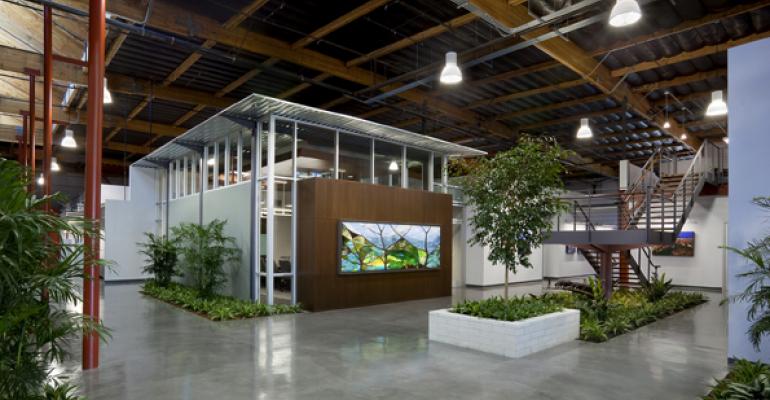California is often touted as the most environmentally progressive state in the nation—and given the state’s new Net Zero Energy (NZE) initiative, that isn’t surprising.
NZE status requires that buildings generate as much energy as they consume, without creating a carbon footprint. California’s goal is ambitious: the state aims to reach statewide NZE status for all new commercial buildings by 2030 and residential buildings by 2020.
Throughout California, commercial real estate industry firms are gearing up to meet the new regulations. That includes national commercial builder Bernards, which is based in the West and Southwest. Bernards recently achieved LEED Silver certification for its corporate headquarters retrofit in San Fernando, Calif., and has a similar retrofit project under way for its Orange County office as well as several green projects in progress or planned throughout California. The firm has already completed 30 LEED and Collaborative for High Performance Schools projects, including University of California Merced’s LEED Silver Garden Suites & Dining Complex, and 55 LEED Accredited Professional staff members, 22 of whom with the LEED New Construction and Major Renovation designation. Bernards is also a sponsor of the U.S. Department of Energy Solar Decathlon, to be held in October 2013 at Orange County Great Park, which is part of the Marine Corps Air Station El Toro redevelopment project.
Green projects are projected to total $106 billion in the United States in 2013—a bright spot that’s particularly relevant to improvement in California’s economy, where a plethora of new green buildings and retrofit projects, which are under way or planned, are boosting construction and creating thousands of jobs.
According to Rick Fochtman, director of sustainability for Bernards, the value of green projects rose from approximately $10 billion in 2005 to $98 billion in 2012, showing that the push for more green buildings is being driven by economics and environmental policy, as well as consumer demand. “The slow economy forced businesses and institutions to tighten their belt’ and look for ways to reduce costs,” Fochtman said in a statement. “With California sixth in the nation for high energy costs, energy-efficient projects are very popular targets for public and private building owners and operators.”
Cost and energy-saving projects range from equipment upgrades, such as efficient lighting fixtures and high-performance HVAC systems, to better control technologies, renewable energy installations and solar parking canopies.
The increasing costs of building maintenance and operation also make these areas prime for greening, Fochtman added, pointing out that lifecycle cost analysis (LCCA), formerly reserved for very sophisticated property owners, is now commonplace. LCCA, which compares a product's purchase price and lifetime operation and replacement costs, helps owners decide if retrofitting a building with green features is a cost-effective solution. Increasing consumer demand for more healthy and livable places is also driving growth in green building. “More than 80 percent of executive leaders in corporate America believe that the public expects them to engage in sustainability,” said Fochtman. Additionally, a recent survey by McGraw Hill indicated that 84 percent of school districts are currently engaged in a green project and have more planned for the immediate future.

